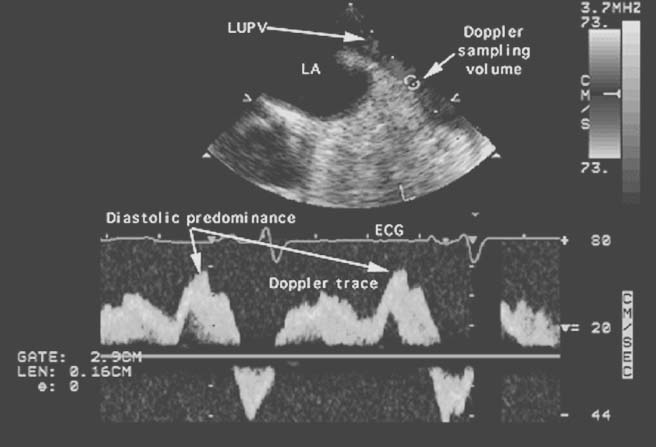 |
 |
Figure 33-12
High left atrial pressure produces diastolic predominance
in the pulmonary venous flow pattern. Pulsed-wave Doppler measurement of blood flow
velocities in the left upper pulmonary vein (LUPV) in a patient with abnormally high
left atrial pressure is shown. At the top of the figure is a still-frame image of
the two-dimensional cross section used to position the Doppler sample volume (the
round white sphere). On the bottom two thirds of
the figure is the display in white of the instantaneous blood flow velocities (vertical
axis) versus time (horizontal axis) occurring in that sample volume. The electrocardiogram
provides timing, and the bold horizontal line is
the baseline (zero flow) for the flow velocities. Flow velocities above the red
line are positive (i.e., toward the transducer) to a maximum of 80 cm/sec.
Flow below the red line is negative (i.e., away
from the transducer) to a maximum of -44 cm/sec. In this patient with abnormally
high left atrial pressure, diastolic predominance of flow is evident; that is, more
flow enters the atrium during the period of ventricular diastole than during ventricular
systole as evidenced by the greater peak and average flow velocities during diastole
than during systole. The negative flow velocities are due to atrial contraction
pushing blood back into the pulmonary vein. LA, left atrium. (From Cahalan
MK: Intraoperative Transesophageal Echocardiography. An Interactive Text and Atlas.
New York, Churchill Livingstone, 1997.)

 |
